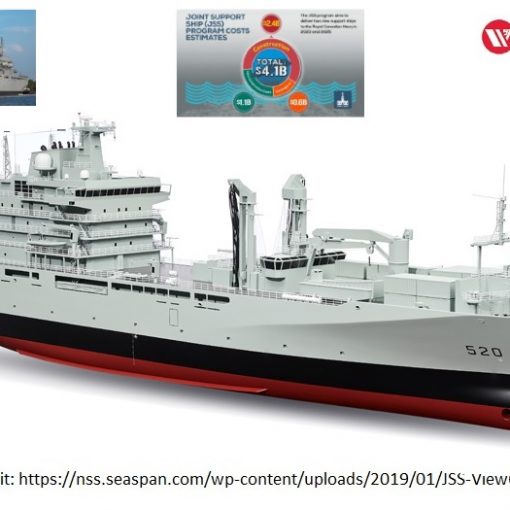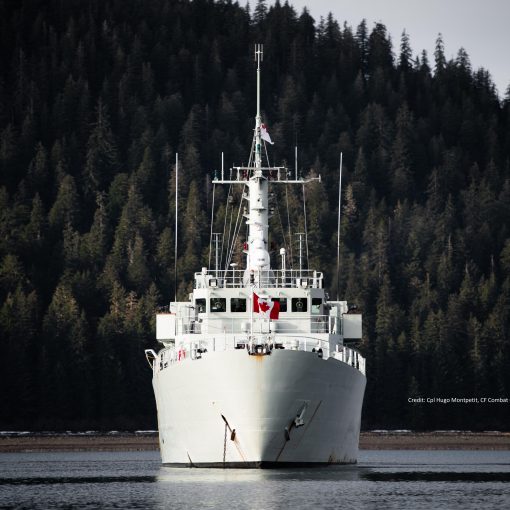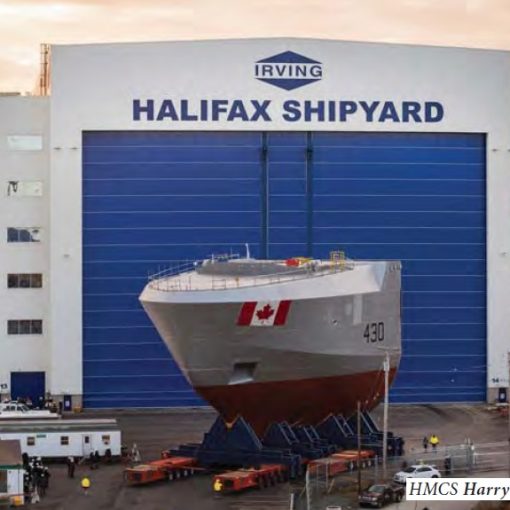By Jeff G. Gilmore, 2 September 2021
During a time of promises related to the upcoming election, it is useful to look at the two major political parties to review their defence policies.
The Conservative Party platform is a commitment to fast-track the replacement of the ageing CF-18s for the RCAF, and to ensure ships promised to the RCN and Canadian Coast Guard are delivered as soon as possible under the 2010 National Shipbuilding Strategy (NSS) and the 2017 Strategic document entitled “Strong, Secure and Engaged.”
The Liberal defence policy says that it will “ensure complex defence procurements are delivered on time, and the government is going to create ‘Defence Procurement Canada.’” The question to be addressed is will there be a substantial organizational change in the offing by the Liberal government in the way defence procurement is currently conducted?
Many critics would argue that our current defence procurement system is broken. Back in 2018 Auditor-General Michael Ferguson delivered an ugly report on the Liberals’ handling of the fighter jet procurement program – specifically, the plan to buy interim warplanes from Australia until the CF-18 fleet can be replaced.[1]
Rob Huebert, an analyst in strategic studies at the University of Calgary described the Auditor-General’s report on the purchase of these interim fighters as an “all-out assault on evidence-based policy making. It is just so damning.”[2] Huebert then went on to say that “Ottawa can’t carry on with business as usual – that the current government must deliver on procurement, instead of doubling down on rhetoric.” The problem, he said, is that “governments haven’t really paid a price in the past for botched military procurement projects. There was no political pain for the agony of the Sea King replacement,” by which he was referring to the two-decade long process to replace the helicopter.[3]
With respect to the acquisition of 15 new warships for the RCN, it took up to two years for endless consultations with the bidders, with the government making up to 88 amendments to the original tender document. In the end, the preferred bid was challenged by a competitor arguing not all of the navy’s criteria were met. The acquisition of the CSCs went from initial costs of estimates of $14 billion to estimates now from the Parliamentary Budget Office of $77 billion.
In a 2019 article, “Canada has the Worst Military Procurement System in the World,’ Richard Shimooka wrote: “Since 2012, Public Services and Procurement Canada has assumed responsibility for the overall control and management of major defence procurements. This has introduced a crushing burden of bureaucratic structures that added a superficial ability to provide knowledgeable project management decisions.” Despite there being only one realistic supplier for many capabilities, the overriding preference has been to run competitions, increasing program costs and delaying capability delivery. Shimooka, points out that “Canada’s fighter replacement program will have gone over 16 years under the present government’s timeline. Most countries required only two to four years to select the F-35.”[4]
David Bercuson, a military historian, noted several years ago that “… Canada’s air force is obsolescent and will become even more so over the next decade as most of our allies, and the US in particular, equip themselves with fifth-generation fighters. Meanwhile, we will continue to fly the CF-18s we currently have or the F-18s we will acquire from Australia. As for maritime operations, here too procurement problems will plague the navy for at least the next decade.” He also points out that “Certainly, for reasons of inadequate infrastructure alone, not to mention ongoing procurement problems that oblige governments to keep pushing back completion dates, it would be impossible to meet that [the NATO target of two per cent of GDP on defence spending] standard any time soon.”[5]
One of the significant problems in acquiring new capital equipment for both the Canadian Forces and the Canadian Coast Guard is that some direction and decisions have to be made by our politicians in Ottawa. For example why is it taking so long to make a decision on acquiring a new fighter jet to replace the ageing CF-18 fleet. The facts before our decision-makers are as follows:
- Canada has already spent over $600 million to remain a partner in the F-35 development costs since 1997 to the builder of the aircraft, Lockheed Martin;
- Canada’s participation in this program allows Canadian companies to benefit from these contracts and allows Canada to buy the aircraft at a lower cost and a priority access to the production line.[6]
- NATO countries have already purchased and are operational with the F-35, such as the US, Britain, Norway and Denmark. Other countries purchasing this fifth generation fighter aircraft are Australia, Japan and Switzerland.
- Canada purchasing the F-35 will make future RCAF operations compatible with their NATO allies. Even now the RCAF will be years behind operationally with the NATO partners in eventually purchasing 88 F-35s.
Although the Conservatives want to speed up the replacement programs for the capital projects for both the Canadian Forces and the Coast Guard, they fail to clearly enunciate the cause of the current procurement bottlenecks in order to lead to a more speedy delivery of the equipment.
The Liberals say they are going to establish a new organization from the existing scheme, which appears to add another layer of bureaucracy to the current regime but again fail to describe how the current processes can be improved.
It is critical that Canadian governments carry out a comprehensive review with other NATO countries to improve and streamline our defence procurement system. Ottawa must make an effort to make decisions sooner in acquiring capital equipment for the Canadian Forces and Coast Guard. Our operational capability is being seriously affected by the inability of getting new equipment into the hands of these players much sooner. It is time the federal government made decisions much quicker to improve our embattled procurement regime that is not working properly.
The Conservative Party platform seems to more adequately capture the urgency associated with the need to procure a number of key weapon system platforms necessary for the CAF to fulfill a variety of its mandates. By extension, this suggests a Conservative government would make some of the
hard decisions related to the procurement initiatives, something the current Liberal government appears reluctant to do. Furthermore, the Liberal policy merely chooses to create another layer of bureaucracy to the procurement process, and doesn't serve notice it is prepared to deliver on procurement budgets previously committed, something of importance when it comes to how
it intends to fund announced covid-related social support programs. Historically, defence-related budgets or procurement programs are first on the chopping block when it comes to re-allocating budgets. Neither party, however, proposes that a fundamental review of the procurement process is
required in order to fix systemic and structural challenges and inadequacies associated with the current process.
[1] Quoted in Murray Brewster, “Why can’t Ottawa get military procurement,” CBC, November 29, 2018.
[2] Rob Huebert quoted in Ibid.
[3] Ibid.
[4] Richard Shimooka, “Canada has the Worst Military Procurement System in the Western World,” MacDonald-Laurier Institute, originally published in The Hill Times, 21 January 2019.
[5] David J. Bercuson, “The Context of Canadian Defence Policy,” Canadian Global Affairs Institute, July 2018.
[6] CTV News, The Canadian Press, “Canada spends another $US 71 million on F-5 amid calls to cancel fighter jet purchase,” 21 July 2021.





